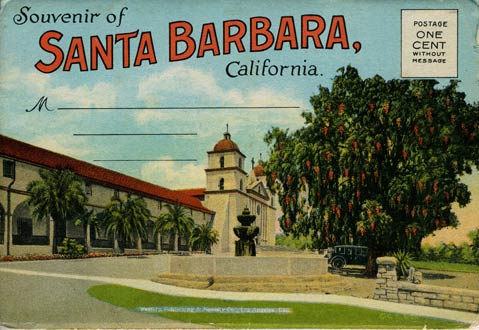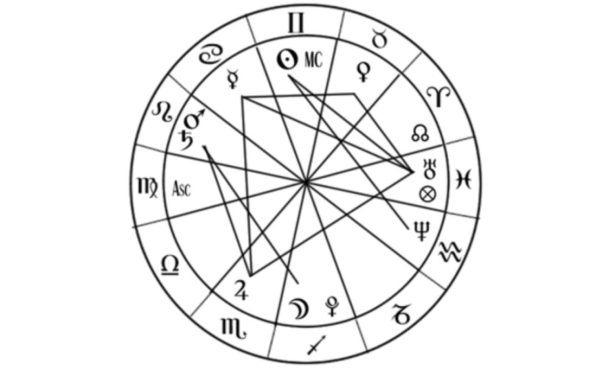
Tourism has been important to Santa Barbara’s economy since the 1870s, and the postcard has played a key role in the growth of this industry. The South Coast was a popular subject for card producers, and local boosters saw the cards as valuable promotional tools.
The Austrian government issued the first postal or correspondence card in 1869; the U.S. government followed suit four years later. The cards carried no images. It was not until 1893, in conjunction with the World’s Columbian Exposition in Chicago, that the federal government issued its first pictorial cards, popularly known as private mailing or souvenir cards.
Private publishers also began to issue postcards. Initially, these cards had to be mailed at the two-cent letter rate, while government-issued cards cost only a penny to mail. This discrepancy caused great consternation, leading to the passage of the Private Mailing Card Act in 1898, which evened the rates.
Thus began the “golden age” of the picture postcard, 1898-1914. The outstanding cards of this period were colored in subdued and subtle tones. The best of these cards came from Germany. Billions of cards were produced and sold every year in this era. The popularity of the picture postcard apparently knew no bounds.
A particularly notable feature of these early cards is the large white space next to the image. The post office did not allow anything but the address to be written on the blank side of the card. Until 1907, when the law was changed, any messages had to be squeezed in next to the image.
The golden age came to a close with the outbreak of World War I in 1914, which cut off the supply of German-produced cards. Quality deteriorated as publishers began to stint on costs by using cheaper inks and creating large white borders around the image. The Depression era of the 1930s was the period of the linen card, so-called because of the cross-hatched paper stock used. The sublime hues of the golden age were replaced by gaudy, brassy colors — a far cry from the postcard’s former artistic sensibilities.
The modern era of the picture postcard began in 1939. The Union Oil Company produced a series of cards in which the color film had been transferred directly to the card stock, producing the glossy color images with which we are familiar today.
Santa Barbara has always been well-represented in picture postcards. National publishers produced large number of cards, as did small, local firms. For example, Osborne’s Book Store, a fixture on State Street until it closed in 1987, published hundreds of Santa Barbara cards.
Local photographers often produced their own cards, selling them in their studios, shops, and other retail outlets. Anyone could make their own cards. People could have their private snapshots transferred to photo-sensitive card stock to send to friends and relatives. Hundreds utilized this opportunity to send visual documentation of the aftermath of the 1925 earthquake here.
Publishers sometimes made subtle alterations to cards to give them greater shelf-life. A daytime view of State Street could yield a second image of the same scene at night. Images were embellished with cloudscapes, landscaping, even people and cars to boost sales. Novelty cards were made out of wood, metal, leather, even bird feathers.
Today, postcard collecting is a popular hobby. Cards can be important research tools, documenting changes over time. Shifts in social habits may be traced, and the notes penned on the cards may offer insights into the minds of our forebears. Postcards can indeed offer a wealth of information.



